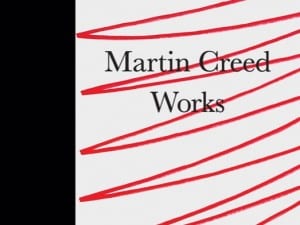In Dénesh Ghyczy’s paintings, abstraction and representation encounter one another in a vibrant manner and question the relationship of observing and painting. The individuals depicted are looking to contact something that is not visible within the picture. In conversation with Aesthetica, the artist discusses the nature of realism set against a digital world and embedded perspectives within compositions.
A: Your paintings cross the boundaries between realism and abstraction, using separate brush strokes interacting with the already stated figures. How did you develop this style?
DG: In my early work I painted people seen through structured glass. An abstraction brought about by the distorting and fragmenting qualities of light breaking structures or devices. These works were still realistic in the sense that I painted what the lens of a camera would see. Gradually my art became more painterly, less controlled. Brush strokes replaced the glass in its function.
A: Do you think it’s true that your works evoke a purgatorial state – your figures are not affixed to one particular layer, held between these two styles?
DG: Yes, I like to play with our belief system regarding the way we observe. In my paintings it is not clear whether the background is “empty” or a shape in which the figure is embedded or held. I think there are always several truths, several viewpoints. This might lead to a particular uncertainty, which I see as a quality. Constant questioning of our habits to become more conscious which means more flexible as well.
A: How do you think this layering process responds to ideas about self-exploration and expression?
DG: I was always interested in dissolving the contours the outlines of the figures. Evoking a state of openness and transparency, for we are not isolated individuals. In my earlier work though, I was focusing on a feeling of separation many people are familiar with. Living under a glass jar, disconnected from everybody and everything. Now I removed the covering layer, to look at what lies behind, and this is what I call the undercurrent, an all connecting flow.
A: Why are you interested in transforming portraits?
DG: If we see a portrait of someone we don´t know, their image might be like a mirror, reflecting something of ourselves. By distorting and fragmenting them, our focus is dispersed and we can go beyond the surface. Another reason for my interest in transforming portraits is to investigate how recognition works. We see fragments, not a coherent image. The gaps of our visual perception are filled by our mind. Recognising faces is one of the first things we learn, and it amazes me how we can reduce or alter the visual information and still recognise a face, because we want to.
A: In contemporary society, there are so many issues relating to how we perceive ourselves, especially in a digital world. Do your paintings respond to this at all? Why do you think that such a traditional method is still relevant?
DG: The questions about who we are and how we perceive ourselves are very old and so is the traditional method of painting. I find this method very warm, at least when the human touch is still visible. The aura of a painting cannot be matched by a mechanically created work of art. I believe that painting still has a huge potential if we go within rather than trying to innovate the exterior. It can be a counterpoint for a continuously digitalised world, leaving a place for the subconscious and the unknown.
A: Do all of your series cohere in terms of theme or style?
DG: Creating series is a way for me to order thoughts and understand in retrospect. They are open for changes or additions. The Into the Void series was first called Dive!I started this one around 2009 when I anticipated some major changes in my personal life. The feeling of jumping into the unknown, letting go of certainties was immanent. But this I could only see in retrospect. Sometimes it takes some distance to recognise our state of being.
A: How do you think that your use of colour is interpreted by audiences. Are you interested in colour theory at all overlapping naturalistic forms?
DG: For the naturalistic forms I pretty much stick with what I see and find. But in my new series called Undercurrent I start with a background using colour intuitively, the naturalistic forms are chosen based on the colour and the brush strokes. Sometimes nothing works which might mean that the undercurrent is not right and then I start anew.
A: Where do you take your main inspiration and how does it affect the work that you produce?
DG: I take my main inspiration from daily observations. Having my camera with me to be ready when and wherever a situation with interesting light occurs. I grew up in The Netherlands in a surrounding with old masters using typically Dutch light. I love the atmosphere of interiors where the figures are shown in strong light contrasts.
A: What have you got planned in terms of future projects?
DG: My new art catalogue Between Lines has been launched by Kerber Publisher recently. It will be presented within institutional shows in Berlin, Helsinki and Tallinn in 2017. In march next year the Hungarian Cultural institute in Berlin will be hosting my studio for one month. The idea is that visitors can be present while I paint. A piano concert by the composer Harald Blüchel will mark the end of this residency program.
To find out more about the artist: www.dghyczy.com
Credits:
1. Dénesh Ghyczy, More Then Elevations (2016). Courtesy of the artist.





